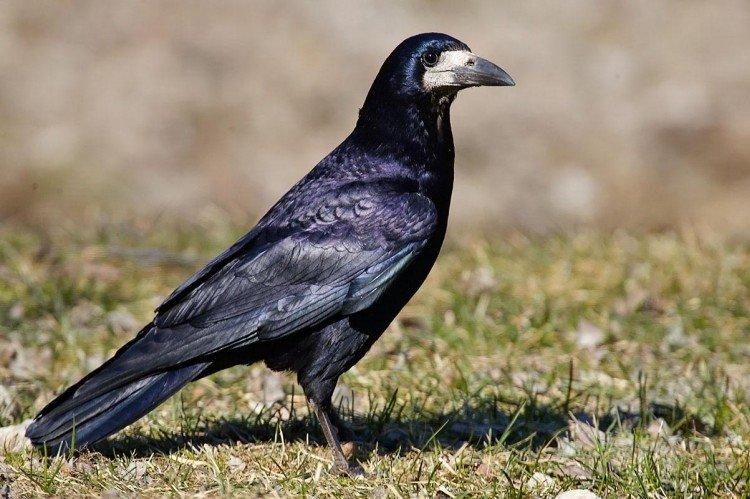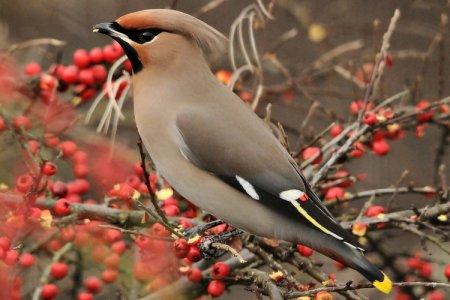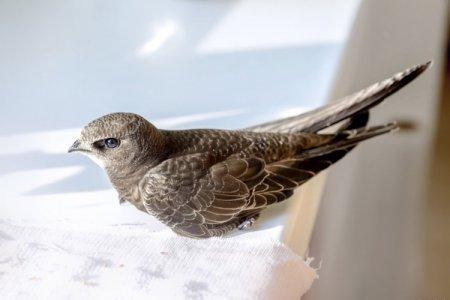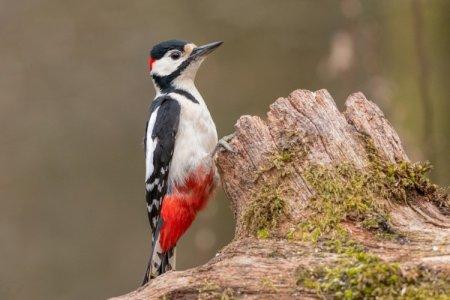
A rook can be mistakenly confused with a raven or even a crow. They really belong to the same family, but if you look closely, the differences become obvious. Let's tell you more about this smart bird!
general description
Rooks belong to corvids, but they have many features that are peculiar only to them. This applies to both appearance and behavior.
Rook appearance
Adult rooks are quite large - up to 47 cm in length and up to 700 g in weight. They have strong large wings and a thick beak. Black plumage casts blue and purple. Feathers are tough, and no fluff breaks through them. The feathers are very coarse, with a long hollow channel to the very tip, which is why they were used as writing instruments.

Rooks and crows: differences
Unlike crows, rooks have a grayish leathery growth around their beaks. This area appears as the bird matures. In addition, a small amount of fluff breaks through on the paws, which forms the characteristic shorts. Crows and jackdaws have completely naked paws.

How long do rooks live?
In the wild, rooks live up to 5 years, and sometimes even less. At home, some individuals safely live up to 15-20 years. About 30% of birds die at a young age, in the first 1-2 years of life.

Intelligence
Rooks are considered very smart and quick-witted birds for a reason. It is officially proven that they know how to create and use simple tools for forage or other needs. And in this they are not inferior even to chimpanzees!

Lifestyle
Rooks are flocking birds, so they live in large groups, and not far from cities and forks of roads. Interestingly, one tall tree can have more than ten nests at a time. Moreover, these nests have been used for more than one year!
Rook habitat
Large populations of rooks are found throughout northern Europe, Romania, Mongolia, Japan and Korea. They settle on the outskirts of forests and in parks, closer to water bodies and forage.

The diet
Rooks eat almost all available insects and larvae. They do not disdain small rodents, and they also willingly eat up garden, grain and vegetable crops. In fact, this is an almost omnivorous bird. Rooks hunt on the ground, masterly plowing their top layer with their strong beak.

Wintering
For the winter, rooks take up areas near the mountains and rivers, and also agricultural plots. That is, everything that does not fall asleep with a thick layer of snow. They hibernate for a very short time, so they return home by the end of February. Birds living in the south of Russia do not fly away at all.

Keeping in captivity
Rooks get used to humans longer than other corvids, but they can be tamed. They have a rather calm and measured character, but at the same time they are very stubborn and persistent.

Breeding rooks
Rooks live in groups, within the same groups they form pairs and keep them for life. During courtship, males often bring edible gifts to females. They use twigs, dry grass, wool, various fibers and even garbage from landfills to create nests.
The female lays 3-7 large eggs once a year. The diameter of one reaches 3 cm. In less than 2 weeks, the chicks break through the bluish shell and are born. Only after a month will they be able to leave the nest, but their parents will continue to take care of them for some time. Very often, adult birds return to their children's nests.

Natural enemies
In the life of large and strong rooks, there are very few enemies among other birds. But they often have to be exterminated in agricultural fields, because they destroy everything: crops, seeds and young shoots.

The benefits of rooks
Despite the fact that rooks often cause serious damage to agricultural crops, they also bring invaluable benefits.In particular, they destroy entire populations of pests - May beetles, silkworms, weevils, scoops, bedbugs and moths.

Rooks - bird photo
And in order to never again confuse rooks with their closest relatives, check out this photo gallery!



























